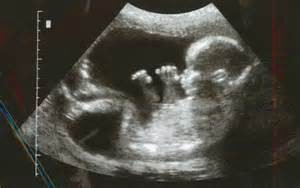
9 Myths about Abortion Rights and Roe v. Wade
May 4, 2022This article was originally published on January 18, 2017
On this day in 1973, the Supreme Court concluded that a woman’s constitutional right to privacy included a right to terminate her pregnancy. After the sweeping decision was handed down, not only were the abortion laws of all 50 states rendered null and void, it was clear that no legal prohibition against abortion before viability would stand. And it would soon become clear that prohibitions after viability were unenforceable. Abortion on demand would be the law of the land.
The moral and spiritual dimensions notwithstanding, there are a plenty of reasons to see Roe as a logical, legal, and political debacle. In his book Abuse of Discretion: The Inside Story of Roe v. Wade, Clarke Forsythe highlights a number of myths that led to the ruling in Roe—myths that, unfortunately, continue to be believed today.
Myth #1: Abortion was a common and widely accepted practice throughout history.
Truth: This inaccurate claim was repeated throughout the 1960s. The fact is that abortion was rare well into the 19th century. Almost all abortion methods before then were ineffective or potentially dangerous to the mother. True, unwanted children were still terminated, but this was done by killing newly born children. If abortion is to be considered a common practice throughout history, the method was infanticide or abandonment (82-85).
Myth #2: Roe was based on a careful investigation of the facts.
Truth: When Roe v. Wade and Doe v. Bolton were tried in the lower courts there were no trials, and the judges did not look at evidence. One of the attorneys even stated that “the facts don’t matter.” Although many of the justices who decided Roe insisted on the importance of the factual record in other privacy cases, the investigation in Roe was largely taken up with procedural questions (92-97).
Myth #3: Women were dying by the thousands because of back-alley abortions.
Truth: The number of maternal deaths from all causes was 780 in 1972 (down from 7,267 in 1942). Of the 780 maternal deaths, 140 were listed as “abortion deaths” by the National Center for Health Statistics, and included in this number were those deaths caused by spontaneous miscarriage (102).
Myth #4: Existing abortion laws targeted women.
Truth: Virtually all states with anti-abortion laws treated the woman as a victim and never as a perpetrator or an accomplice to abortion. The states understood that abortions were often coerced by others and that prosecuting the woman who had an abortion was not enforceable. Instead, “treating the woman as the second victim of abortion was the consistent policy of the states for nearly a century before Roe” (112).
Myth #5: The destruction of the fetus was never treated as infanticide in the American legal tradition.
Truth: Anglo-American law, in a tradition inherited from Roman law, had called the fetus an “unborn child” or “child” since at least the 1200s. In the 19th century statutes enacted in 17 states referred to the crime against an unborn child as “manslaughter,” “murder,” or “assault with intent to murder.” Most of these statutes called the unborn child a “child,” not a fetus or some term which could undermine the full personhood of the unborn (114-115).
Myth #6: Our abortion laws are mainstream compared with the rest of the world.
Truth: The United States is one of only 10 nations that allow abortion after 14 weeks of gestation. Only four countries allow abortion for any reason after viability: Canada, North Korea, China, and the United States (126).
Myth #7: Abortion is safer than childbirth.
Truth: This is one of the myths that was crucial in the Justices’ decision and has been almost entirely overlooked since 1973. This medical mantra, based on seven journal articles with no reliable medical data, was countered in the briefs filed with the Supreme Court and in oral arguments (155-180).
Myth #8: The country is divided on the issue of abortion.
Truth: While a large (but decreasing) number of Americans support Roe, this figure drops precipitously when people are asked, not generically about Roe, but about what Roe actually allows. According to a 2009 poll, only 7 percent of Americans think abortion should be allowed at any time of pregnancy for any reason, precisely what Roe mandated in all 50 states (295).
Myth #9: The pro-life movement is anti-women.
Truth: Women are less supportive of abortion than men. According to a 2010 Rasmussen poll, 53 percent of women believe abortions are too easy to get, compared with 42 percent of men. Likewise, 58 percent of women believe abortion is morally wrong in most cases; 49 percent of men agree with the same statement (305).
Very likely, abortion will always be a controversial topic in this country. Prudential half-way measures may be the best way forward in many circumstances. But with patient instruction, moral courage, generous hearts, care for women in crisis, and a little political resolve, the worst effects of Roe can be mitigated and the lives of many unborn Americans can be saved. Get informed and keep praying. The truth is a mighty ally.
This content was originally published on The Gospel Coalition
